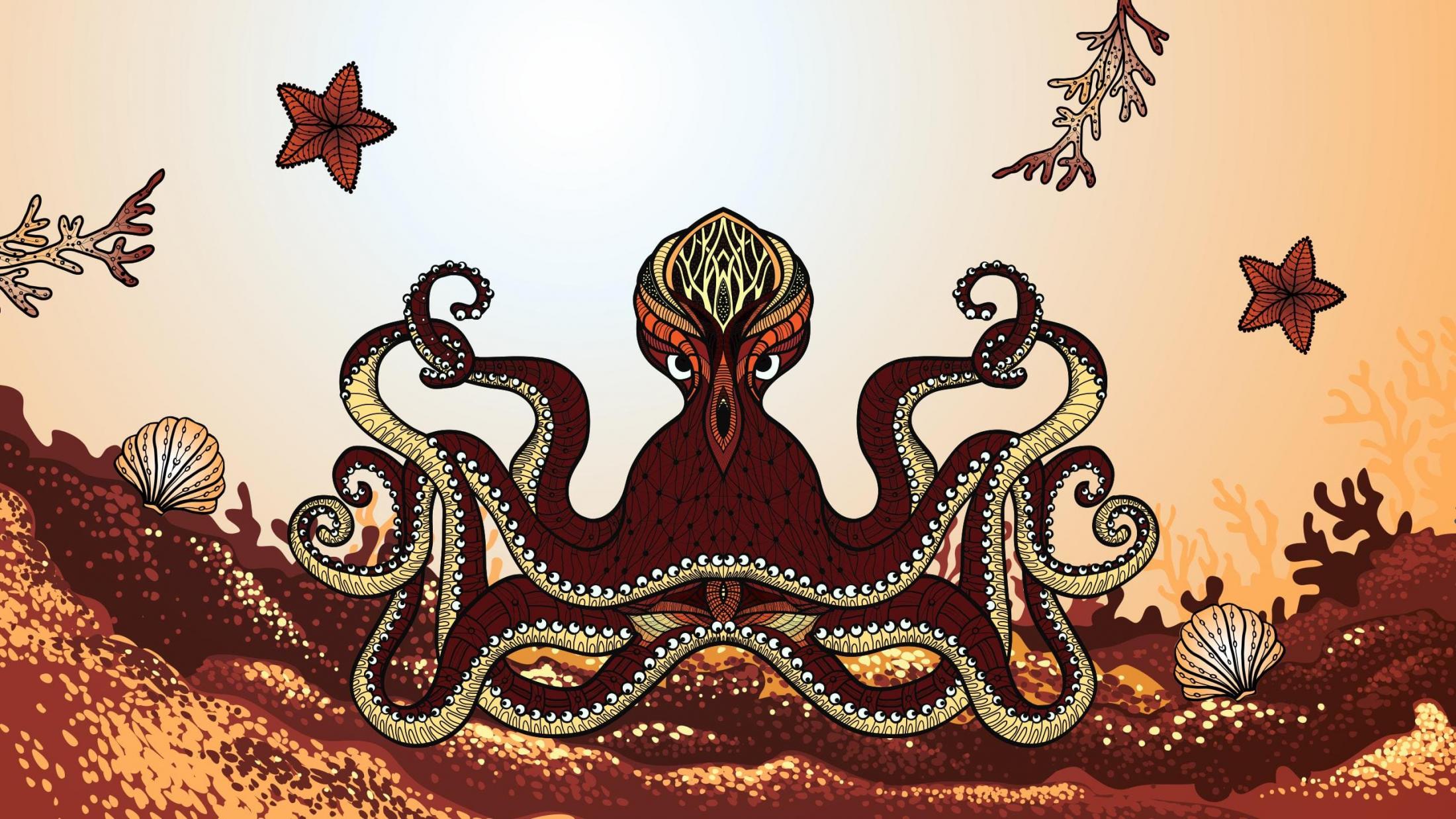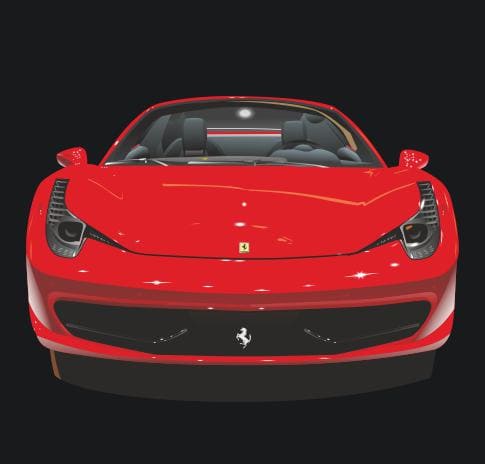
Cre8iveSkill aims to revolutionize the world of vector artwork by providing an exclusive conversion facility at affordable rates.
We aim to give you vector designs that are ready to print with zero hassles. With quick turnaround time and a highly talented team, we focus on capturing the hearts of our customers with dedication and incomparable skills.
Our online vector art conversion services are best suited for marketing, screen printing, promotional and wholesale requirements. We have a diverse team and numerous experts who can process your orders rapidly and within a stipulated timeline.
We have expertise in raster to vector conversion, vector tracing, background removing, drop shadow, color correction, image retouching, graphic mock-up on the product, etc.
For vector art conversion and designing services, we have various available formats like DXF, WMF, AI, CDR, PDF, EPS, etc. Cre8iveSkill has the best vector artwork services!


Screen Printing is the process of transferring an image or a design onto a flat surface using mesh screens, ink, and squeegees. Common surfaces for this are fabric or paper but, with the use of specialized inks, its also possible to print the designs on wood, metal, plastic, and glass!
Direct-to-Garment (DTG) printing is a popular and durable method of print that is done directly on clothing by spraying the ink. The ink soaks into the fibers, leaving it nice looking without any blemishes or stains rubbing off over time!
Transferring a design onto a surface using ink and heat is Sublimation Printing. It requires the images to have a high quality to get the best results. Vector images have no pixelation. Hence they are the best choice.
This method uses reactive dyes and steam to print permanent designs on the fabric. Reactive printing using vector images is ideal when the images are complex, and the lines and curves are sharper.
The main difference between DTG & DTF (Direct-to-Film) printing is that in DTG, the design is printed directly onto the fabric, while in DTF, the design is first printed on a transparent film and then coated with an adhesive to stick it onto the fabric.
Using lasers to etch a design or image on a solid surface like leather, glass, and metal, or even textile materials is known as Laser Engraving. In the fashion industry, vector art in Laser Engraving is preferred if thin lines have to be engraved on the apparel.
Vinyl cutting is a versatile procedure involving vinyl cutters to cut and weave through the fabric to produce designs, labels, and even heat-transfer prints. Vinyl cutting is extremely precise, making digital art vectors the best fit for textile designs.
"Cre8ive Vector Artwork Services at your fingertips!"
Our team of experienced and skilled designers works rigorously to keep them updated with the latest and growing techniques of vector conversion. Cre8iveSkill offers several solutions for converting your drawings into high-quality vector images. With our online tools, top-notch expertise, hazzale free vector designs , and quick turnaround time, you can get your design out there in no time! Here are the services that we specialize in:
Cre8iveSkill understands that design is the blueprint of any artwork and it is a constant challenge to balance comfort, luxury, and practical desire. So, with backbreaking work and customers' preferences in mind, we aim to make everything as incredible for you.
Cre8iveSkill believes in creating extraordinary vector artwork for its amazing clients with acute attention to detail and design made for machine-friendly output and customer satisfaction.
Manual tracing of the artwork takes place to make sure that the vector art services we provide you with are error-free in the digital illustrations and vector artwork. The Vector artwork is then acutely scanned by the professionals in our team.
Our Vector Art services are performed with the goal to exceed the expectations of our clients with Vector art Conversion services. We are most obliged to represent our final outcomes to our clients in an elaborate manner.
Our visualization of creating any vector artwork is to put the vision of our client on priority and design the Vector art or create Vector Art Conversions in line with the perspective of our clients.
Our Commitment to speedy delivery and quick turnaround time is of the utmost importance to us. We perform a quality check of all the Vector art services we perform to ensure all-round customer satisfaction.
A vector file is a computer graphic that uses mathematical formulas to render its image, instead of using pixel data that is used in a raster file. A vector image begins with a point and when two points are joined, they create a path. These paths can be straightened or curved, and then connected with more points to form longer paths or closed shapes. Each path, curve, or shape has its own formula, so they can be sized up or down and the formulas will maintain the crispness and sharp qualities of each path. A vector file has the capability to infinitely adjust in size without losing resolution which makes vector files versatile for certain types of tasks than raster files.
Some of the most common types of Vector files that Cre8iveSkill works with are:
Adobe Illustrator or .ai - This type of file is used in print media and digital graphics, such as logos.
Encapsulated PostScript or .eps - It is an older type of vector graphics file. These files do not support transparency in the way more modern file formats like AI do.
Portable Document Format or.pdf - This vector file format is built for the exchange of documents across platforms.
Scalable Vector Graphics format or.svg - This type of file is based in XML (a language used across the Internet, readable by both machines and humans). It is useful for the web where it can be indexed, searched, and scripted.
One should use vector files whenever they need graphics displayed in various sizes. Imagine you have a company and you want to get your logo designed. The best format that you can create your logo is in Vector file format. This vector logo will be used on business cards, brochures, flyers etc. It might also appear on T-shirts, billboards, and tiny mobile device screens. Other common vector files include icons, typography and lettering designs, patterns, and digital illustrations.
Vector files sound a bit complicated, but you do not have to make them yourself! Cre8iveSkill is an expert for vector art conversion. We provide services starting from logo designing to removing the background of any given image.
Vector images are described by shapes such as circles and squares, as opposed to bitmap images which are described by pixels - squares of color arranged in a grid. The shapes are precise mathematical descriptions of the image and can be scaled without becoming blurry or "pixelated" (that blocky look that bitmap or raster images so often get when scaled up).
We are incredibly systemic in our work. We have a 3-stage quality check and assurance (QC and QA) process where we inspect each design individually and ensure that the designs are sharp and clean. If you find any defect, we will correct it and vectorize it again. We correct the image till it achieves perfection, and then it is sent to you in a requested file format.
Vector images are described by shapes such as circles and squares, as opposed to bitmap images which are described by pixels - squares of color arranged in a grid. The shapes are precise mathematical descriptions of the image. They can be scaled without becoming blurry or pixelated (that blocky look that bitmap or raster images so often get when scaled up).
Because vector images do not use any pixels, you can resize them infinitely larger or smaller without any loss of quality, and they will still print out just as clearly, with no increase (or decrease) in file size.
The most common uses of vector images are advertising, marketing, and brand awareness like vector logo designs. In the fashion industry, vector graphics are commonly used for Custom Printed Fabric Labels, Garment Illustrations, Logos, Embroidery Patches, Digitizing, and more.
One should use vector files whenever they need graphics displayed in various sizes. Imagine you have a company, and you want to get your logo designed. The best format that you can create your logo is in a vector file format. This vector logo will be used on business cards, brochures, flyers, etc. It might also appear on T-shirts, billboards, and tiny mobile device screens. Other common vector files include icons, typography and lettering designs, patterns, and digital illustrations.
Vector files sound a bit complicated, but you do not have to make them yourself! Cre8iveSkill is an expert for vector art conversion. We provide services starting from logo designing to removing the background of any given image.
Encapsulated PostScript (.eps) is an older sort of vector graphics file that does not enable transparency like more recent file formats such as.ai.
Vectors are digital shapes made up of lines and curves that combine to form an image based on a mathematical formula. These lines and curves, often known as pathways, enable designers to scale pictures as simple as a form to as complicated as a full-fledged art.
There are two sorts of image files when working digitally: raster and vector. Both sorts of images can be saved with a variety of file extensions. It's critical to know when to utilise which image type and which file extension to use in which situations.
Vector files are graphics created using mathematical methods to establish grid points.
Raster files are made up of coloured chunks that are frequently referred to as pixels.
Vector files are more adaptable than raster files for certain types of operations because they may be scaled indefinitely without losing resolution.
The Following are the most popular Vector File Format :
ai: This format, which stands for Adobe Illustrator, is often used in print and digital graphics, such as logos.
Encapsulated PostScript (.eps) is an older sort of vector graphics file that does not enable transparency like more recent file formats such as.ai.
The Portable Document Format (.pdf) is a cross-platform document exchange format that may be edited with Adobe Acrobat.
svg: The Scalable Vector Graphics format is based on XML (a widely used mark-up language that can be read by both machines and humans).
It's appropriate for the web because it can be indexed, searched, and scripted.